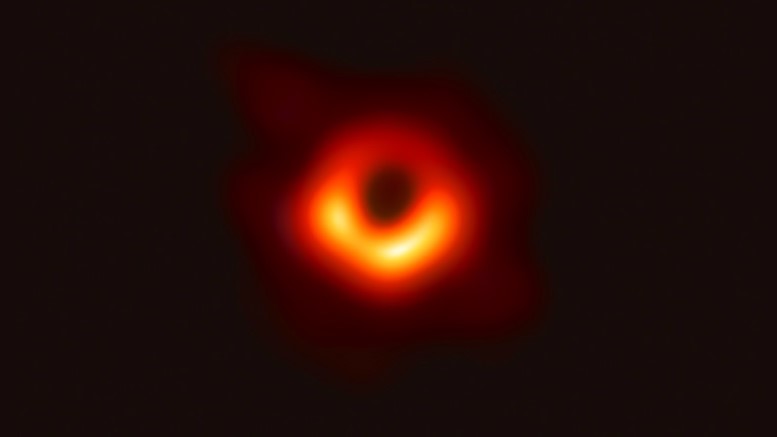Studying Black Holes … with Water

This image of M87*, a supermassive black hole, serves as evidence for Einstein’s theory of general relativity. (Event Horizon Telescope project)
Let’s continue the fun with analogies! Below we expand on the use of a particular analogy from science which we briefly discussed in a recent article.
The image above depicts the supermassive black hole M87*, which sits at the centre of the M87 galaxy some 55 million light years away. It was compiled from radiofrequency signals collected across several telescopes over two years. It is the first of its kind.
In the image we are given direct evidence of Einstein’s theory of general relativity. The black hole is dark, as predicted, since radiation cannot escape black holes once it’s within their boundaries. Moreover, the accretion disk (bright) around the black hole, from which radiation is emitted, is of a lopsided-doughnut shape. This varied brightness results from intense gravitational warping. And, because of rotation, there’s a kind of relativistic Doppler effect going on: radiation is boosted in the direction of rotation towards Earth.
Now, here’s a funny thing of relevance to us: some scientists and philosophers claim we can study black holes by investigating … [drum roll] … plain old water. One argument goes like this.
In analogue experiments, involving surface-water waves, something about black holes is realisable in surface-water waves’ ‘white holes’. Therefore, black holes can be modelled by analogy because their models and the models of white holes are related by the assumptions they share.
The analogy is not defined by a material relation. Nonetheless, thermal aspects of Hawking radiation (named after Stephen Hawking), which is released at black-hole boundaries, can be simulated in water. The analogy owes itself to ‘syntactic isomorphism’ between models, whereby the relation is confirmed in a ‘Bayesian sense’.
‘Analogue simulation’ is still a powerful experimental tool which can be used in a similar sense to computer simulation. Isn’t this cool? Or are such analogies fraudulent in some way because they only offer crude and opaque approximations via models which are often proven incorrect?
